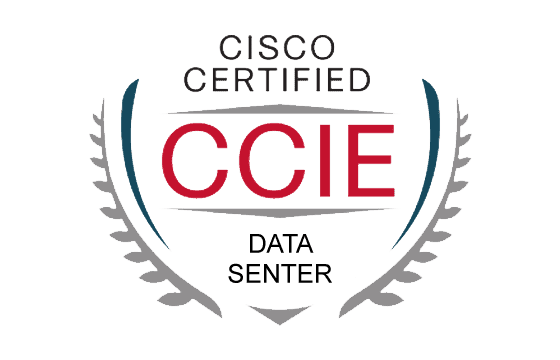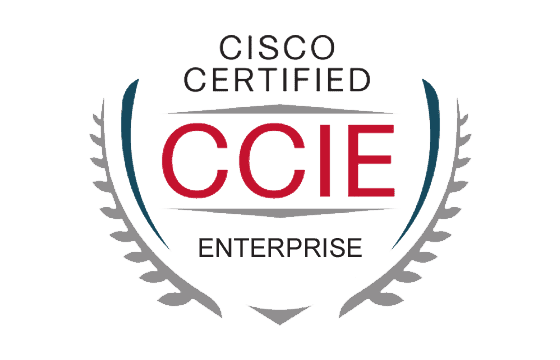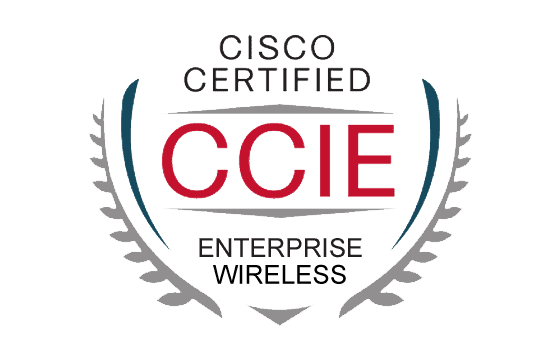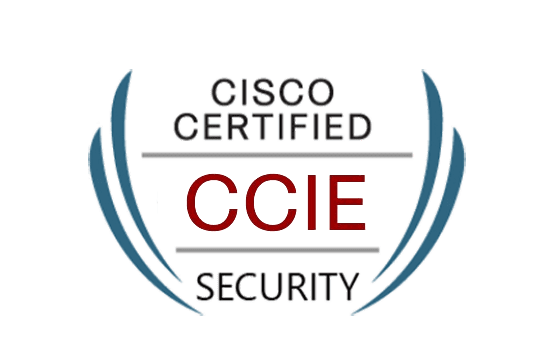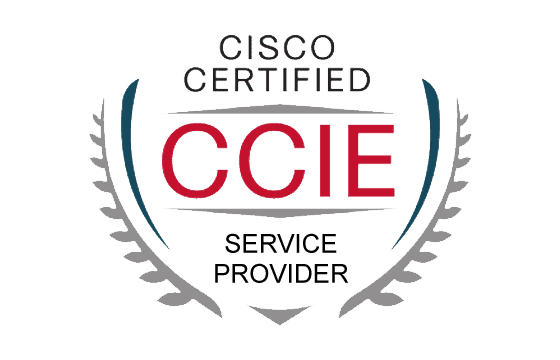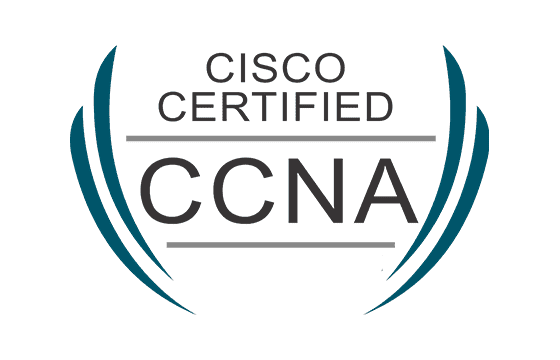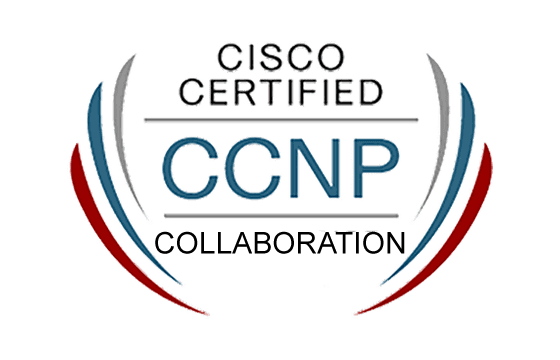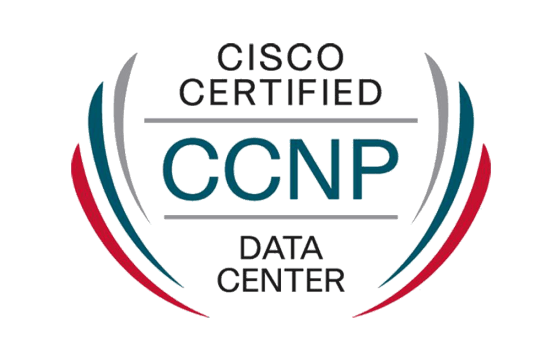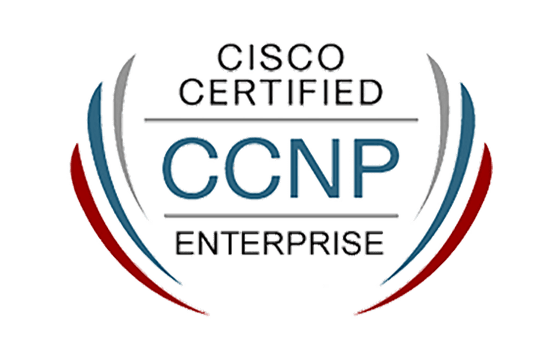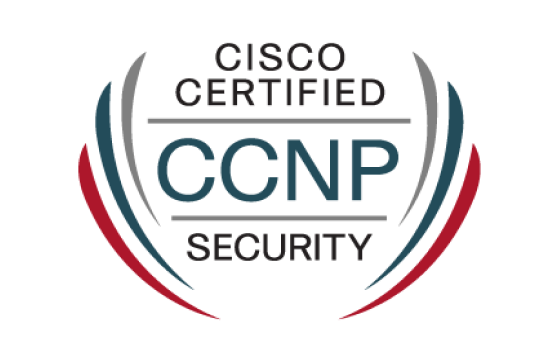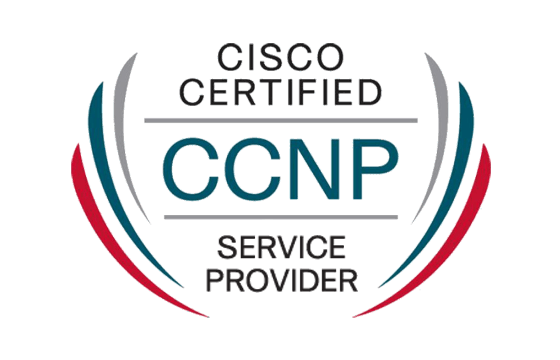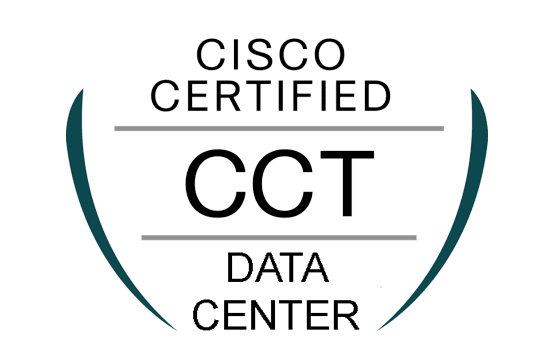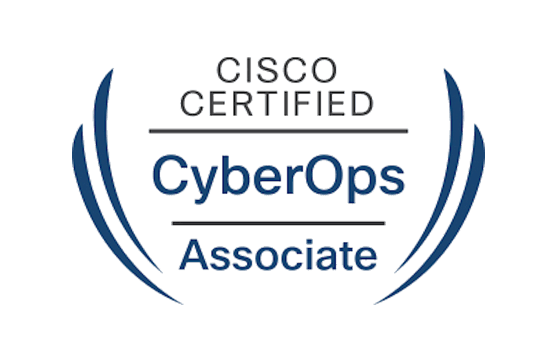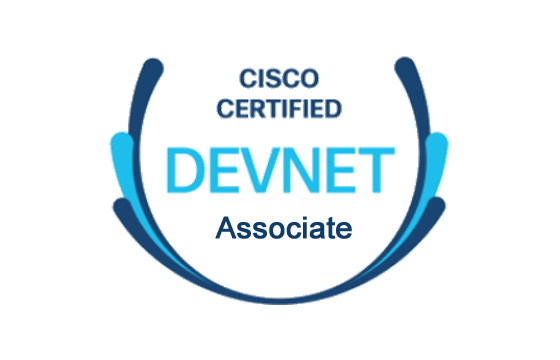Pass Your Cisco CCT Routing and Switching Certification Easy!
Cisco CCT Routing and Switching Certification Exams Questions & Answers, Accurate & Verified By IT Experts
Instant Download, Free Fast Updates, 99.6% Pass Rate.

Cisco Certified Technician Routing & Switching (RSTECH)
Includes 64 Questions & Answers
$69.99
Download Free CCT Routing and Switching Practice Test Questions VCE Files
| Exam | Title | Files |
|---|---|---|
Exam 100-490 |
Title Cisco Certified Technician Routing & Switching (RSTECH) |
Files 1 |
Cisco CCT Routing and Switching Certification Exam Dumps & Practice Test Questions
Prepare with top-notch Cisco CCT Routing and Switching certification practice test questions and answers, vce exam dumps, study guide, video training course from ExamCollection. All Cisco CCT Routing and Switching certification exam dumps & practice test questions and answers are uploaded by users who have passed the exam themselves and formatted them into vce file format.
Cisco CCT Routing and Switching Certification: A Complete Guide to Building Strong Networking Foundations
The Cisco Certified Technician (CCT) Routing and Switching certification is one of the most accessible entry points into the world of networking. For individuals who want to step into the field of information technology, this certification serves as a solid foundation. It is designed to validate the knowledge and skills required to support and maintain Cisco networking devices. While many people view certifications like CCNA or CCNP as goals, the CCT Routing and Switching credential ensures you are prepared with the basics and ready to begin your journey in the networking profession.
Networking is the backbone of modern business operations. Every company, whether small or large, depends on reliable connectivity. From communication platforms to e-commerce websites, smooth operations depend on a stable and secure network. The CCT Routing and Switching certification helps professionals gain the competence to manage the underlying infrastructure that keeps these networks functional. By starting here, you not only build essential technical skills but also position yourself for advanced growth opportunities in the IT industry.
Understanding the Role of CCT Routing and Switching
To appreciate the value of this certification, it is important to understand its role within the broader networking environment. Cisco, being one of the most influential names in the networking industry, provides hardware and software solutions used globally. Routers and switches are central to how data travels within and between networks. When these devices malfunction or require updates, organizations need professionals who can quickly step in to diagnose and resolve issues.
The CCT Routing and Switching certification validates your ability to provide first-level support. This includes diagnosing common hardware problems, understanding basic configurations, and replacing faulty devices. You may not be expected to design complex networks at this stage, but you will become an essential part of the support team that ensures continuity of service.
This role is crucial because downtime can cost businesses significant amounts of money and negatively impact customer experience. With certified skills, you become the professional who helps restore normal operations quickly, ensuring reliability and efficiency in the workplace.
Why the Certification Matters in Today’s Industry
The demand for networking professionals is consistently growing. As more organizations adopt digital-first strategies, the need for reliable infrastructure increases. Whether it is supporting remote employees, maintaining secure online transactions, or enabling communication platforms, networks are at the heart of modern life.
The Cisco CCT Routing and Switching certification matters because it demonstrates to employers that you have the competence to handle the initial layer of network support. Companies often look for professionals who can not only respond to issues but also contribute to preventing them. With this credential, you show readiness to take on those responsibilities.
Additionally, it establishes credibility for those new to the field. Without experience, breaking into IT can be challenging. Certifications like CCT help bridge the gap by proving that you have acquired knowledge recognized by an industry leader. Employers see this as a sign of commitment and capability, giving you an edge over other candidates.
Core Skills Gained Through the Certification
The certification is structured to help candidates develop practical skills applicable to real-world environments. Some of the essential skills include:
Identifying Cisco routers and switches, their components, and basic functionalities.
Understanding how to use Cisco command-line tools to gather device information.
Performing basic troubleshooting of connectivity issues.
Replacing hardware devices and ensuring proper configuration.
Supporting network engineers in maintaining stable systems.
These skills go beyond theoretical knowledge and prepare you for day-to-day tasks within an IT department or support team. For example, being able to pinpoint why a router is not connecting or knowing how to configure a switch to restore access can significantly reduce downtime for an organization.
Who Benefits from Pursuing CCT Routing and Switching
This certification is designed for a wide range of individuals. It is especially beneficial for those who are starting in IT and want to establish a career in networking. Help desk staff, field technicians, and junior IT support professionals often find it valuable.
For individuals transitioning into technology from another career, the CCT Routing and Switching certification provides a clear entry point. It does not require advanced prerequisites, making it accessible to anyone willing to put in the effort to learn the fundamentals.
Even for professionals who already have some exposure to IT but lack formal credentials, this certification provides validation of their skills. It acts as a stepping stone for further Cisco certifications, ensuring they can confidently progress toward more advanced credentials like CCNA.
How the Certification Builds Confidence
One of the biggest challenges for beginners in IT is confidence. Without hands-on experience, many new professionals feel uncertain about tackling real-world problems. The CCT Routing and Switching certification addresses this by focusing on practical skills.
When you train for this certification, you learn not just concepts but also how to apply them in actual environments. Through labs, simulations, and hands-on practice, you become familiar with Cisco devices. This familiarity builds confidence in your ability to manage equipment, troubleshoot issues, and support your team.
Employers also recognize this confidence. A candidate who can demonstrate not only knowledge but also practical skills is more likely to succeed during job interviews and in their first role.
Exam Overview and What to Expect
The certification is earned by passing an exam that evaluates your knowledge of Cisco devices, basic networking concepts, and troubleshooting techniques. The exam typically covers the following domains:
General networking fundamentals
Cisco equipment identification and features
Basic configuration of routers and switches
Troubleshooting methodologies
Replacement and maintenance procedures
The questions test both theoretical understanding and practical application. You will need to demonstrate that you can recognize device features, interpret basic configurations, and resolve common connectivity issues.
Candidates preparing for the exam often use study guides, online resources, and practice tests. Some also benefit from lab environments where they can interact with Cisco equipment or simulations. The combination of study and practice is key to successfully earning the certification.
Value to Employers
From an employer’s perspective, hiring someone with the Cisco CCT Routing and Switching certification means having a reliable first line of support. Network downtime is one of the most costly issues organizations face. When systems go down, operations stop, and revenue may be lost.
A certified technician ensures that problems are addressed quickly. Even if complex issues need escalation to senior engineers, the ability of a CCT-certified professional to diagnose and perform initial troubleshooting saves valuable time. Employers also benefit from reduced training costs since certified employees already have proven knowledge.
Career Opportunities with CCT Certification
While this certification is considered entry-level, it opens doors to a variety of roles. Some common career paths include:
Network Support Technician
Field Service Technician
IT Help Desk Specialist
Technical Support Associate
Junior Network Engineer
These roles provide valuable experience in real-world IT environments. They also expose professionals to more complex problems, preparing them for advancement. Over time, individuals can use this foundation to pursue advanced certifications and higher-paying positions.
How the Certification Fits into the Cisco Pathway
The CCT Routing and Switching certification is part of Cisco’s broader certification ecosystem. Cisco has designed its credentials to follow a progression, allowing professionals to grow from entry-level to expert-level certifications.
After completing CCT, many professionals pursue the Cisco Certified Network Associate (CCNA). This certification goes deeper into networking concepts such as routing protocols, security fundamentals, and network automation. From there, individuals can specialize in areas such as security, collaboration, data center, or service provider networks through CCNP-level certifications.
Ultimately, the pathway can lead to expert certifications like CCIE, recognized globally as one of the most prestigious credentials in networking. By starting with CCT, you set the foundation for this entire journey.
The Global Recognition of Cisco Certifications
One of the biggest advantages of earning a Cisco certification is global recognition. Cisco is a leader in the networking industry, and its certifications are respected worldwide. Whether you plan to work locally or explore opportunities abroad, holding a Cisco credential gives you credibility.
Employers across industries understand the value of Cisco-trained professionals. From small businesses to large enterprises, the need for reliable networks is universal. This global recognition ensures that your skills remain valuable no matter where your career takes you.
Personal Growth and Development
Beyond career benefits, earning the CCT Routing and Switching certification contributes to personal growth. The process of preparing for the exam builds discipline, problem-solving skills, and technical confidence. You learn how to approach challenges systematically, breaking down complex problems into manageable steps.
This problem-solving mindset extends beyond IT. Many professionals find that the skills they develop while pursuing certifications also help them in other aspects of their lives, from managing projects to analyzing everyday issues logically.
Overcoming Challenges During Preparation
Like any certification, the journey to CCT Routing and Switching has challenges. Beginners may struggle with technical jargon, unfamiliar command-line interfaces, or understanding networking concepts. However, with consistent practice and study, these challenges become manageable.
Creating a study plan is crucial. Breaking down topics into smaller sections allows you to build knowledge gradually. Using practice exams helps identify weak areas and improve time management. Engaging with study groups or online forums also provides additional support, making the preparation process smoother.
The Long-Term Value of Starting with CCT
While some may see entry-level certifications as minor achievements, the long-term value of CCT Routing and Switching cannot be overstated. It not only opens the door to your first IT job but also sets the stage for lifelong learning and advancement. Many senior engineers and IT managers began their careers with foundational certifications like CCT.
By earning this credential, you take the first step on a pathway that can lead to advanced technical roles, leadership positions, or specialized expertise in areas such as security and cloud computing. It becomes the base on which your entire career is built.
The Cisco CCT Routing and Switching certification is more than just an entry-level credential. It is a gateway into the networking world, offering practical skills, industry recognition, and career opportunities. For individuals beginning their journey in IT, it provides a clear path forward. By validating your ability to support and maintain Cisco networking devices, this certification ensures you are ready to contribute effectively in any organization.
As technology continues to evolve, the demand for skilled networking professionals will only increase. Starting with CCT Routing and Switching allows you to build a strong foundation, develop confidence, and set the stage for a rewarding career in the ever-growing field of networking.
Cisco CCT Routing and Switching Exam Guide
The Cisco Certified Technician (CCT) Routing and Switching certification is earned by passing an exam that validates your ability to identify Cisco equipment, understand basic networking concepts, and troubleshoot common issues. For those starting their careers in IT, this exam is both a challenge and an opportunity. A clear understanding of the exam structure, topics, and preparation strategies is essential for success. This guide explores every aspect of the certification exam, helping candidates prepare with confidence.
Purpose of the Exam
The purpose of the CCT Routing and Switching exam is to measure your competency in providing first-level support for Cisco devices. Organizations rely on network uptime, and even minor disruptions can cause significant setbacks. The exam ensures that certified individuals have the knowledge and skills required to quickly identify problems, perform maintenance, and restore operations when necessary.
Rather than focusing on advanced engineering tasks, the exam emphasizes practical skills, such as equipment identification, configuration basics, and troubleshooting. Passing it demonstrates that you are prepared to work in an environment where Cisco routers and switches play a central role.
Eligibility and Requirements
One of the advantages of the CCT Routing and Switching certification is its accessibility. There are no formal prerequisites for attempting the exam. This makes it ideal for beginners or professionals transitioning into IT without prior experience. While having some familiarity with networking concepts is helpful, anyone willing to commit to study can pursue this certification.
Cisco does recommend that candidates have basic knowledge of computer systems, familiarity with IP addressing, and an understanding of how networks function. Even if you are new, these skills can be developed during your preparation phase.
Exam Structure
The CCT Routing and Switching exam is a proctored test that typically lasts around 90 minutes. It includes a range of question types, such as multiple-choice, drag-and-drop, and scenario-based questions. The exam is designed to evaluate both theoretical knowledge and practical application.
Some of the areas covered include:
Networking fundamentals
Cisco device components and features
Identifying routers and switches
Using Cisco command-line interface for basic tasks
Troubleshooting connectivity issues
Performing equipment replacement and maintenance
Understanding the structure helps you manage time effectively. Since the exam blends conceptual questions with practical scenarios, you will need to balance speed with accuracy.
Domains and Topics Covered
To prepare thoroughly, candidates should focus on the main domains included in the exam. These typically include:
General Networking Knowledge
Understanding IP addressing and subnetting
Recognizing common networking protocols
Basics of routing and switching concepts
Cisco Equipment Identification
Recognizing device models, components, and features
Understanding the role of routers and switches in a network
Cisco IOS Software Navigation
Using the command-line interface (CLI)
Executing basic commands to gather system information
Accessing configuration modes
Troubleshooting
Identifying and resolving connectivity issues
Diagnosing hardware and software problems
Applying systematic troubleshooting methodologies
Maintenance and Replacement
Proper handling of hardware
Steps for replacing faulty devices
Ensuring new devices are correctly configured and functional
By focusing on these areas, candidates can build a study plan that ensures all essential topics are covered.
Registration Process
Registering for the CCT Routing and Switching exam is straightforward. Cisco exams are administered through authorized testing centers or online proctoring platforms. You begin by creating an account on Cisco’s certification platform, selecting the exam, and choosing a suitable date and location.
When registering, ensure that your name matches your identification documents, as discrepancies can cause issues on the exam day. Payment is required during registration, and fees vary depending on location, but the cost is generally lower than intermediate certifications like CCNA.
Study Resources for Preparation
Preparation for the CCT Routing and Switching exam requires a blend of study materials and practical practice. Cisco provides official resources, but many third-party platforms also offer valuable tools. Some effective study resources include:
Official Cisco study guides
Online training courses
Practice exams and quizzes
Cisco Packet Tracer or lab simulations
Networking forums and study groups
Hands-on practice is especially important. Even if you do not have access to physical Cisco equipment, using simulators can help you gain familiarity with command-line interfaces and configurations.
Building an Effective Study Plan
An effective study plan ensures consistent progress and reduces exam anxiety. Here are some steps to build one:
Assess your current knowledge and identify weak areas.
Break down the exam topics into weekly study goals.
Allocate time for both reading and hands-on practice.
Schedule regular practice exams to monitor progress.
Revise difficult topics frequently to reinforce understanding.
A structured plan not only makes preparation manageable but also improves retention. Instead of cramming close to the exam date, consistent study builds deeper understanding and confidence.
Tips for Hands-On Practice
Practical skills are central to this certification. Even if you are new to networking, practicing with Cisco commands and troubleshooting scenarios is essential. Here are some ways to maximize hands-on learning:
Use Cisco Packet Tracer or GNS3 to simulate networks.
Create simple topologies with routers and switches.
Practice configuring interfaces, assigning IP addresses, and testing connectivity.
Simulate common issues, such as incorrect IP addresses or unplugged cables, and practice resolving them.
Explore different show commands in the CLI to gather system information.
These exercises prepare you for the real-world tasks that the certification is meant to validate.
Common Mistakes to Avoid During Preparation
Many candidates struggle with preparation because they fall into common traps. Some mistakes to avoid include:
Memorizing commands without understanding their purpose.
Ignoring basic networking concepts like IP addressing.
Overlooking hands-on practice and focusing only on theory.
Skipping practice exams, which help with time management.
Leaving study until the last minute.
Avoiding these pitfalls increases your chances of passing on the first attempt.
Exam-Day Preparation
On the day of the exam, preparation goes beyond technical knowledge. Arrive early at the testing center or set up your environment if you are taking the exam online. Make sure your identification matches your registration details.
During the exam:
Read each question carefully before answering.
Manage your time wisely, but do not rush through questions.
Use process of elimination for multiple-choice questions.
For scenario-based questions, apply the troubleshooting methodologies you practiced.
Staying calm and confident helps you perform better under pressure.
What Happens After Passing the Exam
Once you pass the CCT Routing and Switching exam, you officially earn the certification. Cisco provides a digital badge and certificate, which you can showcase on professional platforms like LinkedIn or include in your resume.
This certification validates your skills and makes you more competitive in the job market. Employers recognize that you are trained to handle first-level support tasks for Cisco networking devices, making you a valuable addition to their team.
What If You Do Not Pass
Not everyone passes on the first attempt, and that is perfectly normal. If you do not succeed, analyze your performance to identify weak areas. Cisco provides feedback on exam domains where you scored lower, which can guide your next round of preparation.
You can retake the exam after a short waiting period. With improved preparation and focused practice, many candidates pass on their second attempt.
Certification Validity and Renewal
The CCT Routing and Switching certification is valid for three years. To maintain your certification, you can retake the exam before it expires or pursue higher-level Cisco certifications such as CCNA.
Renewing or advancing your credentials ensures that your skills remain up to date. Since networking technologies evolve constantly, staying certified helps you remain relevant in the job market.
Why This Exam Is a Stepping Stone
The CCT Routing and Switching exam is often seen as the first stepping stone in Cisco’s certification journey. While it validates entry-level skills, it also prepares you for more advanced exams. Many of the concepts learned during CCT preparation are revisited at deeper levels in CCNA and beyond.
By passing this exam, you demonstrate discipline and technical ability. Employers see it as a sign that you are serious about your career in networking. It also gives you the motivation and confidence to continue learning and advancing in the IT field.
The Cisco CCT Routing and Switching exam is more than just a test; it is a gateway into the world of networking. By understanding its structure, preparing effectively, and practicing consistently, candidates can succeed and begin their careers in IT with confidence.
This certification not only validates your skills but also sets the stage for future growth. Whether your goal is to advance to CCNA, specialize in a particular field, or eventually achieve expert-level status, the CCT Routing and Switching exam is the first crucial step in that journey.
Practical Skills and Hands-On Knowledge for CCT
The Cisco Certified Technician (CCT) Routing and Switching certification is more than a credential to list on your resume. It is a practical validation of your ability to work with Cisco devices and support networking infrastructure. While studying for the certification provides theoretical knowledge, the true value comes from the hands-on skills you develop. These skills prepare you to handle real-world challenges, making you a valuable asset to any IT support or networking team.
This section explores the essential practical skills covered by the CCT Routing and Switching certification, along with the hands-on knowledge required to succeed in professional environments.
The Importance of Hands-On Skills in Networking
In networking, theoretical knowledge alone is never enough. While it is important to understand concepts such as IP addressing, routing, and switching, the day-to-day work of a network technician requires applying that knowledge in real-time.
When a company experiences downtime due to a device failure, there is little room for hesitation. A certified technician must be able to quickly diagnose the problem, identify whether it is hardware or configuration related, and take corrective action. This is why the CCT certification emphasizes practical training. It ensures that candidates are not only familiar with networking concepts but also capable of executing tasks under pressure.
Hands-on skills also build confidence. Once you are comfortable navigating Cisco devices, using commands, and solving issues, you become more self-assured in your role. This confidence is not only beneficial for your career growth but also reassuring to your employers and colleagues.
Device Identification and Basic Functions
One of the foundational skills you gain from the CCT Routing and Switching certification is the ability to identify Cisco devices and understand their functions. Routers and switches are the backbone of networks, and each plays a distinct role.
Routers connect multiple networks and direct traffic between them.
Switches operate within a network to manage communication between devices.
As a technician, you must recognize different Cisco models, their ports, interfaces, and indicators. Being able to correctly identify equipment allows you to perform tasks such as replacing faulty devices or preparing new ones for deployment.
In practice, you will often encounter scenarios where identifying the correct device is the first step in resolving a connectivity issue. For example, understanding whether the problem lies with a router connecting two networks or a switch within the local network can drastically reduce troubleshooting time.
Navigating the Cisco IOS Interface
Another critical hands-on skill is navigating Cisco’s Internetwork Operating System (IOS). This command-line interface is used to configure and manage Cisco devices. While advanced engineers perform complex tasks with IOS, CCT-certified technicians must know how to use it for basic functions.
Some of the common tasks include:
Accessing the device through console or remote sessions.
Using show commands to gather system information.
Checking interface status and configurations.
Viewing device logs to identify errors.
By becoming familiar with IOS, you learn to quickly extract information that helps in diagnosing issues. For example, using commands to check whether an interface is administratively down or has incorrect settings can pinpoint why connectivity is lost.
IP Addressing and Connectivity Verification
A strong grasp of IP addressing is essential for anyone working in networking. The CCT certification requires you to understand the basics of IP addresses, subnet masks, and default gateways. These concepts may seem simple, but they are at the heart of network communication.
In real-world practice, you will need to verify that devices have correct IP configurations. A common issue is when devices are assigned incorrect addresses, preventing communication with other devices on the network.
Using tools such as ping and traceroute, you can test connectivity and identify where communication fails. These skills are indispensable when troubleshooting, as they help you quickly determine whether the issue lies in configuration, hardware, or external factors.
Troubleshooting Methodologies
Troubleshooting is one of the most valuable skills for a CCT-certified professional. The ability to systematically identify and resolve problems ensures network uptime and smooth operations.
The certification emphasizes structured troubleshooting methodologies, which include:
Identifying the problem by gathering information.
Isolating the issue to a specific device or configuration.
Testing possible solutions step by step.
Applying the fix and verifying results.
Documenting the resolution for future reference.
For example, if a user reports that they cannot access the internet, you would begin by checking physical connections, verifying device configurations, and testing connectivity at various points. This structured approach prevents wasted time and ensures efficient resolution.
Hardware Maintenance and Replacement
Networking equipment is subject to wear and tear, power surges, and hardware failures. As a CCT-certified technician, you are expected to perform routine maintenance and, when necessary, replace faulty components.
This includes tasks such as:
Identifying failing hardware based on status indicators or error messages.
Removing and replacing components like power supplies or interface cards.
Installing and configuring replacement devices.
Ensuring compatibility and proper integration with the existing network.
These tasks may seem straightforward, but they are critical for minimizing downtime. A well-trained technician ensures that equipment is replaced quickly and correctly, avoiding additional issues.
Collaboration with Network Engineers
Another practical aspect of the certification is preparing you to collaborate effectively with senior network engineers. While you may not be responsible for designing or configuring complex networks, your ability to provide accurate information and first-level troubleshooting greatly supports the team.
For example, during an outage, you may be tasked with collecting device logs, checking configurations, or identifying hardware issues. By providing detailed and accurate information, you enable engineers to focus on advanced solutions without wasting time on basic checks.
This collaboration not only makes you valuable to your team but also gives you opportunities to learn from more experienced professionals, accelerating your career growth.
Hands-On Practice Tools
To develop practical skills, candidates often rely on tools and simulations that mimic real-world scenarios. Some of the most effective practice tools include:
Cisco Packet Tracer, a simulation software that allows you to design and test networks virtually.
GNS3, an advanced emulator for those who want more realistic practice environments.
Virtual labs offered by training providers, where you can access real Cisco devices remotely.
Practice kits with used Cisco routers and switches for hands-on configuration.
Using these tools, you can practice tasks such as configuring interfaces, troubleshooting connectivity, and replacing devices, all without needing access to a professional lab environment.
Real-World Scenarios and Use Cases
The skills gained through CCT training are directly applicable to real-world scenarios. Consider some common use cases:
A switch in an office stops forwarding traffic. You identify the issue as a faulty port, replace the switch, and restore connectivity.
A router loses its configuration due to a reset. You reload the saved configuration and verify that the device is working properly.
Users report slow connectivity. You check interface statistics and discover errors caused by a damaged cable. By replacing the cable, performance improves.
These examples illustrate how practical skills are used daily to maintain smooth operations.
The Role of Documentation
Another often-overlooked skill emphasized in real-world practice is documentation. Recording the steps you take to resolve issues not only helps your team but also provides a reference for future incidents.
For instance, if a specific router model experiences recurring hardware issues, documenting replacement steps ensures that future technicians can resolve the problem quickly. This practice contributes to efficiency and builds a culture of knowledge sharing within the organization.
Developing Soft Skills Alongside Technical Skills
While the CCT certification focuses primarily on technical abilities, hands-on practice also develops soft skills that are vital in IT support roles. Communication, patience, and problem-solving are essential when dealing with colleagues or clients who may not understand technical details.
Explaining issues clearly and providing reassurance during outages demonstrates professionalism. These soft skills, combined with your technical expertise, make you a well-rounded technician capable of handling both technical and human aspects of network support.
How Hands-On Knowledge Prepares You for Advancement
The practical knowledge gained during CCT certification serves as the foundation for more advanced Cisco certifications. Skills such as navigating IOS, troubleshooting connectivity, and replacing hardware are revisited and expanded upon in CCNA and beyond.
By mastering these basics, you make the transition to higher-level concepts smoother. For example, understanding how to use show commands prepares you for configuring advanced routing protocols later in your career.
Hands-on experience also strengthens your resume. Employers value candidates who can demonstrate real-world abilities rather than just theoretical knowledge.
Challenges in Gaining Practical Skills
While the benefits of hands-on practice are clear, many candidates face challenges in gaining practical experience. Access to equipment can be expensive, and not everyone has the resources to build a personal lab.
Fortunately, simulations and online labs offer affordable alternatives. By dedicating time to these tools, you can gain the same foundational knowledge needed for success. The key is consistency and practice until tasks become second nature.
The Confidence Boost of Practical Mastery
Once you are comfortable with hands-on tasks, you will notice a significant boost in confidence. Walking into an interview or a new job role knowing you can configure devices, troubleshoot issues, and replace hardware gives you a competitive advantage.
Employers look for candidates who not only understand concepts but can also apply them. Your practical mastery sets you apart and provides the assurance that you can handle responsibilities from day one.
The Cisco CCT Routing and Switching certification is more than a test of knowledge; it is proof of your ability to apply practical skills in real-world environments. From identifying devices and navigating IOS to troubleshooting issues and replacing hardware, the certification equips you with the tools necessary to succeed as a network technician.
By focusing on hands-on learning, you build confidence, credibility, and career readiness. These skills not only help you in your first role but also lay the groundwork for future advancement in the networking field. With consistent practice and real-world application, you transform from a beginner into a capable professional ready to tackle the challenges of modern IT infrastructure.
Introduction to Real-World Relevance
Earning the Cisco CCT Routing and Switching certification is not only about passing an exam or acquiring theoretical knowledge. It is about preparing professionals for real-world networking situations, where quick problem-solving, accurate diagnostics, and system reliability are critical. This certification enables individuals to translate classroom or self-study concepts into skills applicable in business environments, large enterprises, and even small organizations that depend on smooth network operations.
In today’s digital-first world, where companies rely heavily on secure and efficient connectivity, the ability to manage and troubleshoot Cisco routing and switching devices provides immediate value. This section explores the practical applications of this certification, highlighting how certified professionals contribute to daily operations, long-term network strategy, and organizational resilience.
Supporting Enterprise Network Operations
Every modern enterprise runs on a backbone of networking infrastructure, where routers, switches, and firewalls ensure communication across departments, locations, and global branches. CCT-certified professionals are often the first line of support, addressing issues quickly before they escalate.
For instance, when an enterprise router malfunctions, or when users experience connectivity problems, certified technicians step in to perform diagnostics. Using remote tools and on-site procedures, they evaluate configurations, check hardware status, and restore service. The practical knowledge gained from the certification enables them to replace devices or escalate complex issues to engineers with complete documentation, saving valuable time.
By serving as dependable support staff, these professionals help reduce downtime, which directly impacts productivity, customer satisfaction, and revenue. Enterprises value this role highly because reliable network uptime is tied to both efficiency and reputation.
Enhancing Small and Medium-Sized Business Networks
Small and medium-sized businesses (SMBs) also rely on networking devices, but often with limited IT staff. In these environments, a certified technician becomes indispensable. The knowledge gained from Cisco CCT Routing and Switching allows technicians to handle network deployment, troubleshoot issues, and ensure systems remain operational without requiring constant support from expensive outside consultants.
Examples include setting up switches to support office expansion, configuring routers for secure internet access, or maintaining basic VLAN setups to segment departments. These tasks may not always be complex, but they are essential to ensure that business operations run smoothly and securely.
SMBs particularly benefit from professionals who can bridge the gap between routine maintenance and specialized engineering. By applying certification knowledge, technicians create environments where technology supports business goals without requiring overwhelming resources.
Critical Role in Data Centers
Data centers act as the hub for digital transformation, cloud applications, and large-scale storage. They are intricate environments where downtime can cost companies thousands or even millions of dollars. CCT-certified professionals play an essential role in supporting these centers by ensuring switches, routers, and network modules are functioning optimally.
For example, when a switch line card fails, CCT technicians diagnose and replace it efficiently, minimizing service interruptions. They are also skilled in performing system reboots, updating firmware, and assisting in equipment migrations during upgrades. While engineers design architectures, technicians ensure that the physical and operational layers remain reliable.
This symbiotic relationship demonstrates how the certification equips professionals to contribute meaningfully in high-pressure environments. In data centers, every second counts, and technicians with Cisco expertise provide a crucial buffer against operational risks.
Remote Troubleshooting and Field Support
Another area where this certification proves invaluable is remote troubleshooting. Many organizations now operate with distributed teams, branch offices, or hybrid environments where on-site IT resources are limited. In such cases, certified technicians act as field engineers, visiting sites or guiding non-technical staff through processes to resolve hardware and network issues.
Using tools like remote desktop connections, secure terminal access, and Cisco’s diagnostic utilities, CCT professionals can identify problems from a distance. They also collaborate with higher-level engineers, providing on-site assistance such as replacing faulty devices, cabling corrections, or verifying connectivity post-configuration.
The capacity to operate both remotely and on-site reflects the adaptability of this certification. In industries where time and cost savings are critical, this flexibility provides immense value.
Supporting Managed Service Providers
Managed Service Providers (MSPs) often offer networking support for multiple clients across industries. A CCT-certified technician is particularly valuable in this environment because they can handle diverse hardware, respond quickly to client requests, and maintain high service standards.
For instance, when a client’s network faces disruptions, MSPs deploy technicians to diagnose and resolve issues on-site. Certified individuals not only understand Cisco devices but also have the communication skills to explain problems and solutions to non-technical clients. This combination of technical expertise and interpersonal effectiveness makes them an asset in client-facing roles.
By providing consistent and reliable service, these technicians help MSPs retain client trust, expand their portfolio, and enhance overall brand reputation.
Career Growth Through Practical Experience
While the certification itself is an entry-level credential, its practical applications open doors to career growth. Many professionals begin as CCT-certified technicians and eventually move into higher certifications such as CCNA, CCNP, and even CCIE.
Real-world exposure gained through troubleshooting, installations, and network support provides the foundation for more advanced roles. It gives technicians insights into networking complexities, prepares them for project management, and fosters the confidence required for leadership positions in IT.
The career trajectory is clear: start with foundational skills, gain experience in supporting environments, and expand expertise with advanced certifications. For individuals seeking a long-term career in networking, CCT serves as the stepping stone that connects theoretical knowledge with applied practice.
Industry Sectors Benefiting from CCT Certification
The demand for certified technicians extends across multiple industries. Healthcare organizations rely on reliable networks to manage patient data and telemedicine systems. Financial institutions require seamless connectivity for transactions and secure communication. Educational institutions depend on stable systems for online learning and administrative management.
Even government agencies and non-profits benefit from professionals with Cisco CCT expertise. Each of these sectors requires a level of network support that balances reliability, cost-effectiveness, and responsiveness. By employing certified technicians, organizations ensure they have staff capable of maintaining mission-critical systems under varied circumstances.
Importance of Documentation and Communication
Beyond technical skills, the certification also emphasizes soft skills that prove valuable in real-world scenarios. Documentation, for instance, is critical in IT operations. Technicians must record changes, troubleshooting steps, and device replacements to create accurate records for future reference.
Similarly, communication plays a key role. Whether reporting issues to senior engineers or explaining solutions to end users, the ability to convey information clearly ensures smooth operations. These skills may not be directly assessed in the certification exam, but they are developed naturally through training and practice, making certified technicians more effective in their roles.
Building Organizational Resilience
In an era where cyber threats, equipment failures, and unexpected outages are common, organizations value resilience. This resilience is not only built through advanced security or sophisticated designs but also through the steady contribution of professionals who keep basic systems running.
Cisco CCT Routing and Switching certified technicians are part of this resilience strategy. They ensure that routine issues do not escalate into major disruptions, that faulty equipment is quickly replaced, and that higher-level engineers can focus on complex tasks without being bogged down by day-to-day problems.
Preparing for the Future of Networking
The networking industry is rapidly evolving with cloud computing, software-defined networking (SDN), and automation shaping the future. However, hardware and physical devices remain the backbone of these innovations. Routers and switches will continue to exist, and the need for skilled technicians to maintain them will not disappear.
Cisco CCT Routing and Switching certification provides the foundation for adapting to this evolving landscape. Certified professionals who stay updated with new trends, pursue additional learning, and remain hands-on with hardware will continue to thrive even as the industry shifts.
The Cisco CCT Routing and Switching certification holds immense practical relevance in the real world. From enterprise operations and SMB support to data centers and managed services, certified technicians play a vital role in ensuring reliability and efficiency. Their ability to troubleshoot, document, communicate, and adapt makes them valuable contributors across industries.
Moreover, this certification acts as a launchpad for career progression, giving professionals both credibility and experience to pursue advanced roles. As organizations continue to depend on stable and secure networks, the demand for CCT-certified professionals will remain strong, making it not just a credential but a gateway to impactful and rewarding opportunities.
The Role of Cisco CCT Routing and Switching in Advancing IT Careers
Cisco certifications have long been recognized as industry-leading credentials that demonstrate technical expertise and problem-solving abilities in networking. The Cisco Certified Technician (CCT) Routing and Switching certification is particularly valuable for those entering or advancing in IT support and networking roles. Unlike many advanced certifications, this one emphasizes hands-on troubleshooting, maintenance, and repair of Cisco devices. This focus equips professionals with the practical knowledge needed to ensure network reliability and efficiency. As organizations continue to depend on robust network infrastructure, the demand for professionals skilled in managing routing and switching equipment remains high. This certification not only provides an entry point into the networking field but also creates opportunities for career growth across IT disciplines.
Key Skills Gained from Cisco CCT Routing and Switching
One of the main strengths of this certification lies in the specific skills candidates develop during preparation. Holders of the credential acquire expertise in diagnosing network issues, identifying hardware and software malfunctions, and performing essential repairs. They also learn how to replace components, use remote tools for troubleshooting, and escalate complex problems to higher-level support teams when necessary. These skills are essential for keeping critical systems running smoothly. Additionally, certified professionals build confidence in handling routers, switches, and other Cisco equipment. The ability to provide immediate solutions in high-pressure situations makes them an invaluable asset in environments where downtime can significantly affect business operations.
Career Opportunities for Certified Technicians
A CCT Routing and Switching certification prepares professionals for multiple job roles across industries. Common positions include network support technician, field service engineer, data center technician, and help desk analyst. Each of these roles benefits from the hands-on expertise developed through certification training. Employers value candidates who can diagnose and resolve issues quickly, especially when those problems affect customer service, internal communication, or production workflows. Beyond immediate employment opportunities, this credential also creates a pathway to higher-level networking positions such as network administrator or systems engineer. It acts as a stepping stone for professionals looking to pursue additional Cisco certifications like CCNA or CCNP, which further expand career options.
The Growing Importance of Network Reliability
Modern businesses rely heavily on uninterrupted connectivity. From cloud-based applications to collaboration platforms and secure data transfers, reliable networking is the foundation of day-to-day operations. When disruptions occur, organizations face productivity loss, financial setbacks, and potential reputational damage. This makes the role of CCT-certified professionals vital in every sector. They ensure that networks remain stable by quickly addressing problems, reducing downtime, and maintaining optimal performance. As networks grow more complex with the addition of cloud, wireless, and virtualized systems, the need for skilled technicians who understand the core of routing and switching becomes even greater.
How Certification Enhances Professional Credibility
For entry-level professionals, proving technical competence can be challenging without prior experience. The Cisco CCT Routing and Switching certification bridges this gap by offering recognized validation of skills. When employers see this certification on a resume, it signals that the candidate has undergone rigorous training and assessment. This increases credibility and improves chances of securing interviews and job offers. Certified technicians often find it easier to negotiate better salaries and positions compared to non-certified peers. Moreover, this credential reflects a commitment to continuous learning, which is highly valued in the rapidly evolving field of IT.
Preparation and Study Approach
Achieving success in the certification exam requires a structured approach. Candidates should begin by reviewing Cisco’s official exam topics to understand the knowledge areas being assessed. Study resources often include manuals, video tutorials, practice exams, and virtual labs. Since the certification emphasizes troubleshooting, hands-on practice is especially important. Many learners set up home labs or use simulation software to gain practical experience with Cisco devices. Regular revision, combined with scenario-based practice questions, helps in reinforcing understanding. Effective preparation not only ensures exam success but also equips professionals with the skills they will use on the job.
The Certification Exam Structure
The exam for the CCT Routing and Switching certification evaluates candidates on their ability to identify problems, use diagnostic tools, and apply corrective measures. Questions often cover hardware components, software configurations, and network protocols. Test-takers are expected to demonstrate knowledge of Cisco device models, interfaces, and system operations. The assessment typically combines multiple-choice questions with scenario-based challenges that reflect real-world troubleshooting. This structure ensures that certified individuals are well-prepared for the demands of actual IT environments. Familiarity with the exam format helps reduce test-day anxiety and improves performance.
Salary Prospects and Industry Demand
While salary levels vary depending on location, industry, and experience, professionals with the CCT Routing and Switching certification often enjoy higher earnings than non-certified peers in entry-level IT roles. The certification signals practical readiness, which encourages employers to invest in certified staff. In industries such as telecommunications, finance, healthcare, and technology services, network reliability is mission-critical, creating strong demand for certified technicians. With further career progression and advanced certifications, salaries can rise significantly, making the CCT Routing and Switching credential an excellent starting point for a rewarding IT career.
Advancing to Higher Certifications
Many professionals view the CCT Routing and Switching certification as an entry point rather than a final destination. Once certified, individuals often pursue the CCNA (Cisco Certified Network Associate), which provides a deeper understanding of networking fundamentals. From there, advanced paths such as CCNP (Cisco Certified Network Professional) or CCIE (Cisco Certified Internetwork Expert) open doors to senior-level roles. Each step builds on the foundation established by the CCT credential. This progression allows technicians to grow their expertise gradually while taking advantage of new job opportunities and salary improvements at every stage.
The Global Recognition of Cisco Certifications
One of the main reasons professionals choose Cisco certifications is their global recognition. Employers around the world respect Cisco credentials because they reflect consistent training and testing standards. This means certified professionals can find career opportunities beyond their local job market, increasing their mobility and flexibility. For those interested in working abroad or pursuing international contracts, the CCT Routing and Switching certification offers an important advantage. The global demand for networking expertise ensures that certified professionals remain relevant and employable across industries and regions.
The Role of Continuous Learning
Networking technology continues to evolve rapidly with trends like automation, cloud computing, and software-defined networking. To remain competitive, professionals must continually update their knowledge and skills. While the CCT Routing and Switching certification provides a strong start, success in the IT field depends on lifelong learning. This may include renewing certifications, attending workshops, or pursuing additional training in emerging technologies. Continuous learning not only keeps professionals up to date but also increases resilience in an industry that is constantly adapting to new demands.
Challenges and Rewards of the Certification Journey
Earning the Cisco CCT Routing and Switching certification requires dedication, practice, and effective study habits. Many candidates face challenges balancing study time with personal or work responsibilities. Others may initially struggle with the technical depth of topics. However, the rewards far outweigh the challenges. Achieving certification brings a sense of accomplishment and confidence in technical abilities. It also opens the door to professional growth, higher salaries, and long-term career stability. Overcoming these challenges builds perseverance, a quality that proves valuable in real-world troubleshooting and professional environments.
Industry Trends Driving the Need for Certified Technicians
The growing adoption of remote work, cloud-based systems, and advanced collaboration tools has amplified the importance of reliable network infrastructure. Organizations are increasingly seeking professionals who can maintain these systems without disruption. Cybersecurity threats also highlight the need for skilled technicians who can safeguard routing and switching devices from vulnerabilities. As more industries embrace digital transformation, the demand for certified professionals who can support and maintain critical infrastructure continues to rise. This ensures that the CCT Routing and Switching certification remains relevant and valuable for years to come.
Building a Long-Term Career Strategy
While obtaining certification is an important milestone, it is most effective when integrated into a broader career strategy. Professionals should consider how the CCT Routing and Switching certification aligns with their long-term goals, whether in networking, cybersecurity, or IT management. Combining technical expertise with soft skills such as communication, teamwork, and problem-solving creates a well-rounded career profile. Networking with peers, joining professional groups, and gaining practical experience further strengthen career prospects. Viewing certification as part of a larger journey ensures sustainable growth and long-term success.
Conclusion
The Cisco CCT Routing and Switching certification plays a pivotal role in preparing professionals for essential IT support and networking roles. By focusing on practical troubleshooting, maintenance, and repair of Cisco devices, it provides immediate job readiness while establishing a foundation for further career growth. As businesses increasingly depend on reliable networks, certified professionals remain in high demand across industries. The certification not only validates technical skills but also enhances credibility, salary potential, and global career opportunities. For individuals aiming to begin or advance their IT careers, pursuing this certification offers both immediate and long-term rewards.
ExamCollection provides the complete prep materials in vce files format which include Cisco CCT Routing and Switching certification exam dumps, practice test questions and answers, video training course and study guide which help the exam candidates to pass the exams quickly. Fast updates to Cisco CCT Routing and Switching certification exam dumps, practice test questions and accurate answers vce verified by industry experts are taken from the latest pool of questions.
Cisco CCT Routing and Switching Video Courses
Top Cisco Certification Exams
- 200-301
- 350-401
- 300-410
- 350-701
- 300-715
- 820-605
- 350-601
- 300-710
- 300-420
- 300-425
- 300-415
- 350-501
- 200-901
- 700-805
- 350-901
- 200-201
- 350-801
- 400-007
- 300-730
- 300-620
- 500-220
- 300-435
- 350-201
- 300-430
- 300-815
- 300-810
- 300-515
- 100-150
- 300-610
- 300-820
- 300-440
- 100-140
- 300-510
- 300-720
- 300-735
- 300-910
- 300-725
- 300-215
- 300-615
- 300-635
- 300-535
- 700-250
- 500-560
- 500-443
- 700-750
Site Search:






